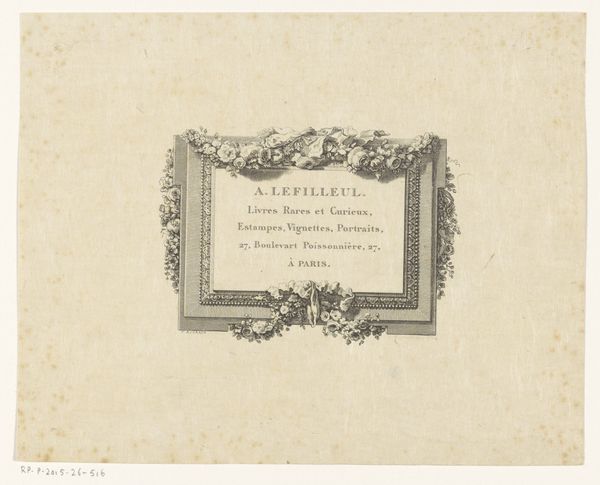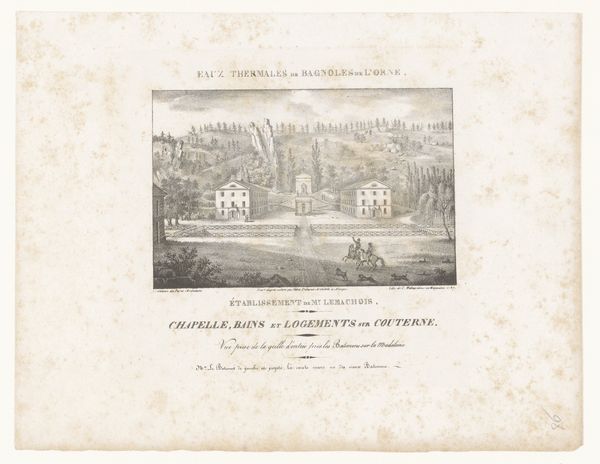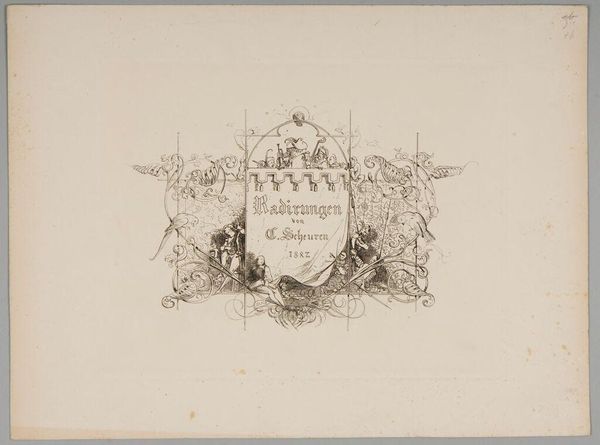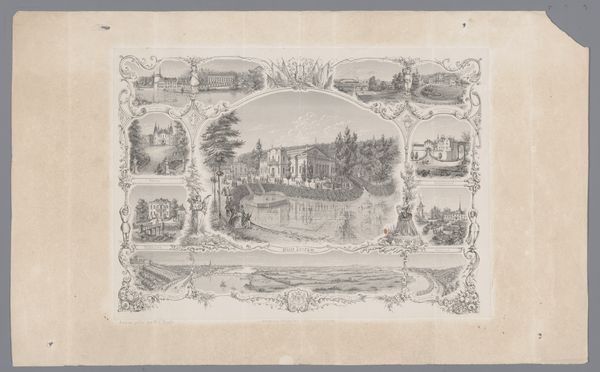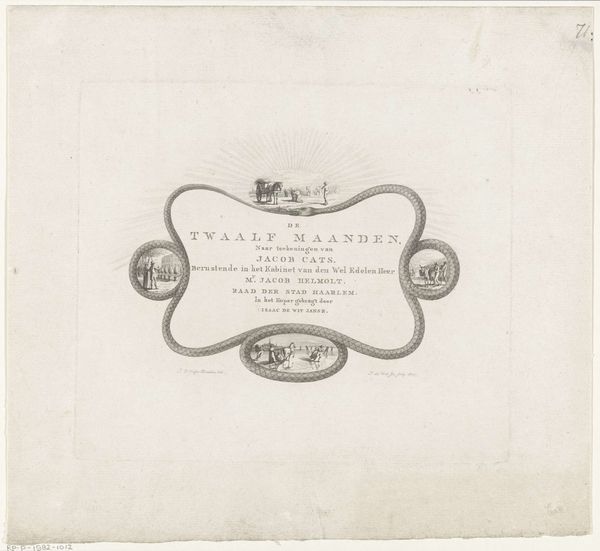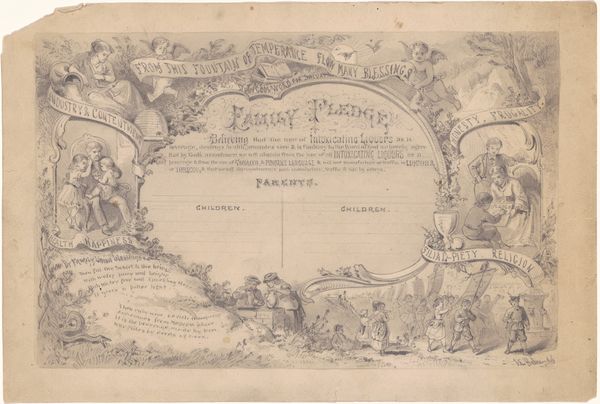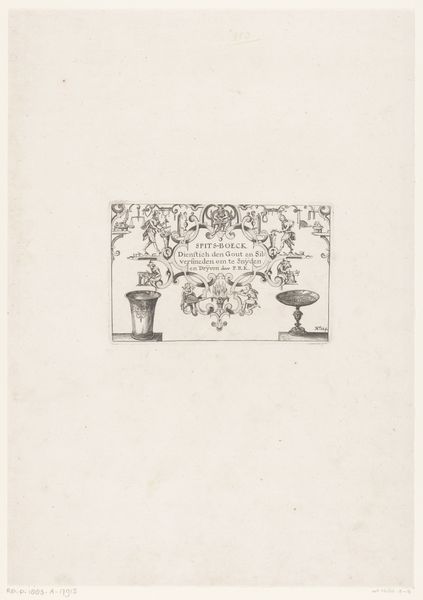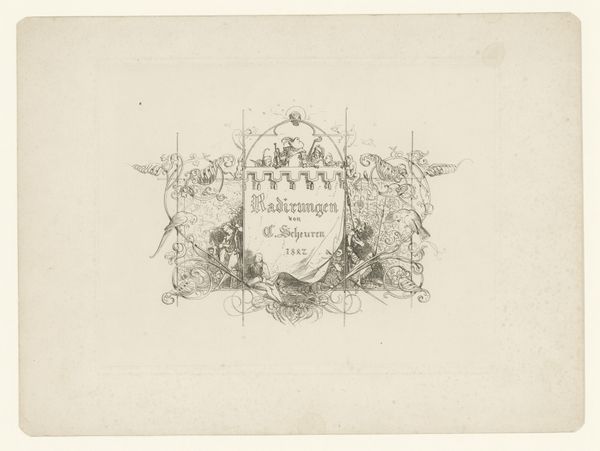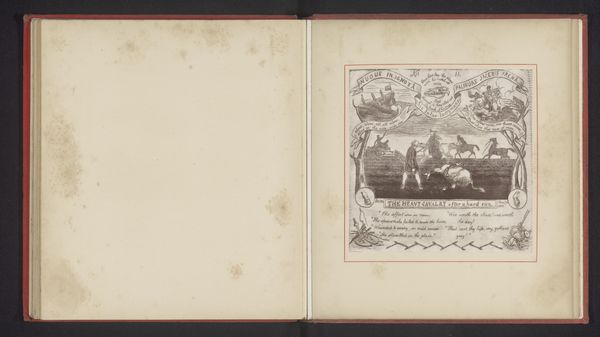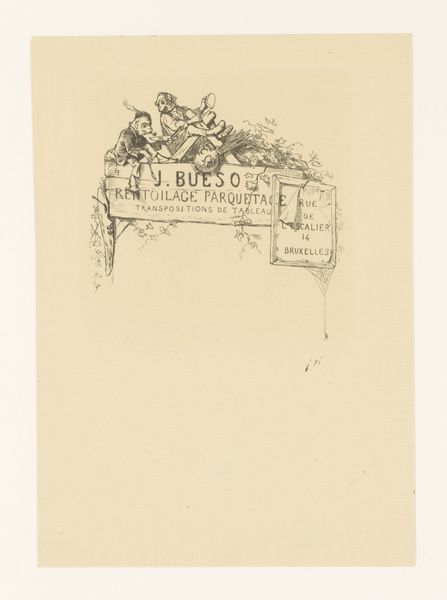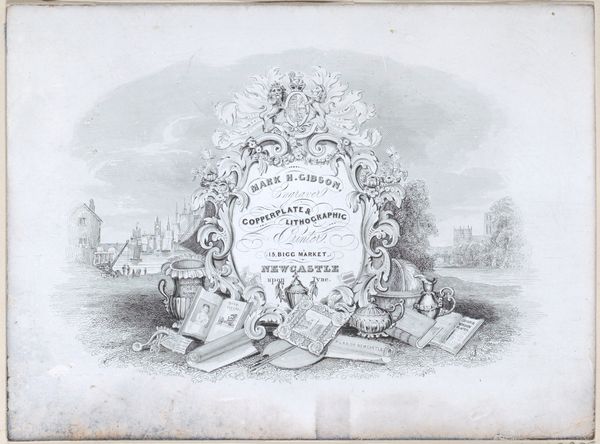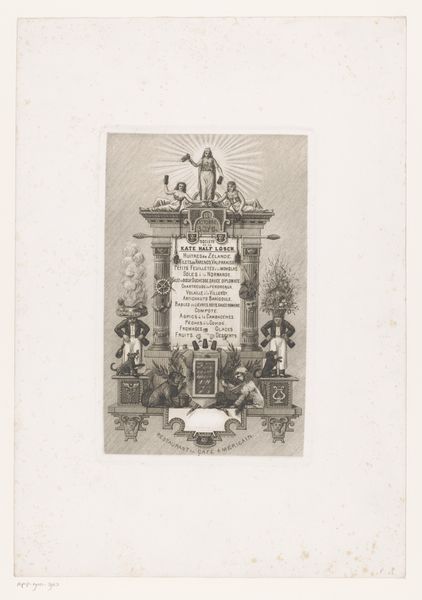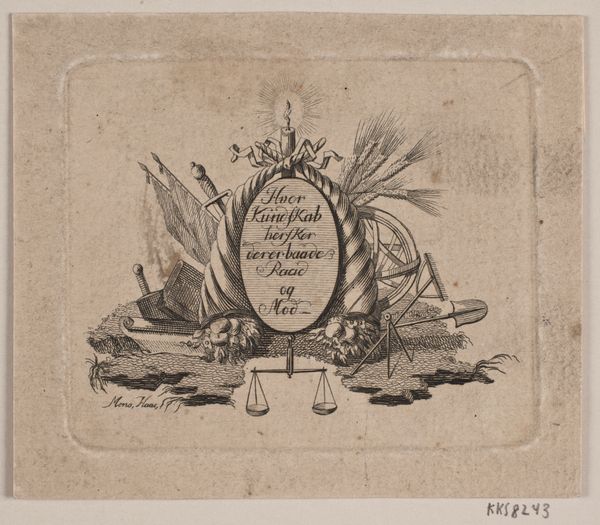
drawing, print, etching, paper, ink
#
drawing
# print
#
etching
#
landscape
#
paper
#
ink
#
romanticism
#
cityscape
Dimensions: height 449 mm, width 570 mm
Copyright: Rijks Museum: Open Domain
Editor: This is "Frame with Various Views of Buildings in the Ardennes," made in 1846 by Louis Ghémar, using etching and ink on paper. The delicacy of the etching is quite striking. What captures your attention most about it? Curator: What I find most compelling is its status as a reproductive print. Look closely at the frame around the title - it’s constructed from smaller landscape views. We see a fascinating tension between mass production and individualized artistic vision here. How does Ghémar’s labor contribute to both the glorification of Leopold I and the aesthetic consumption of the Ardennes? Editor: That's a good point about labor. I see it too. The printing process seems inherently tied to disseminating imagery widely. Was this meant to be a luxury item, given its dedication to royalty? Curator: Exactly! Consider the economics of the print. The etching process allowed for multiple copies, reducing the cost and widening distribution. However, dedicating the work to Leopold I also implies a targeted audience within the upper classes. So, while seemingly democratized through reproduction, its subject and dedication point towards elite consumption and further entrenched social hierarchies. Editor: So, the materials and means of production, etching and ink, aren’t neutral. They're wrapped up in social dynamics, prestige, and economics? Curator: Precisely. Even the choice of paper reflects broader systems of production and distribution. Think about where Ghémar sourced his materials, who was involved in their manufacturing and how all this implicates class. This piece speaks volumes about the industrial context and socio-political climate of its time, embedding the art itself in labor and class relations. Editor: I'm seeing it now - even what seems like a simple landscape is revealing layers of information about the art world of the 19th century. Curator: Indeed, and thinking through that materiality is key to really digging in to works like these.
Comments
No comments
Be the first to comment and join the conversation on the ultimate creative platform.

